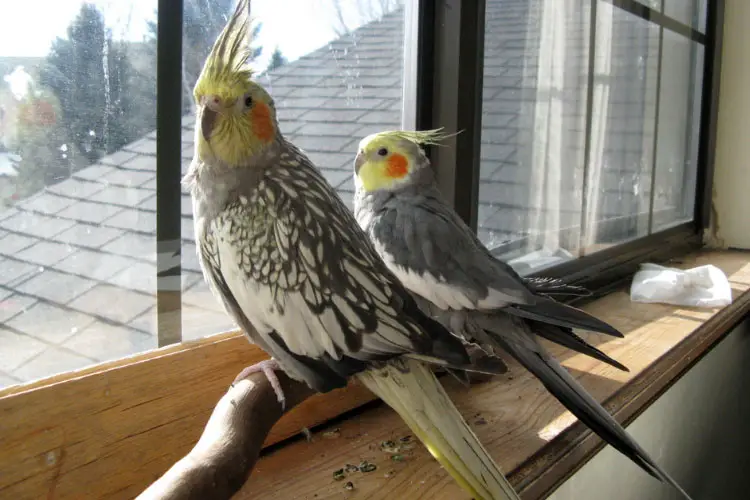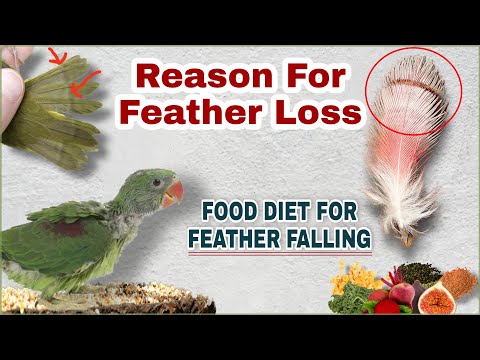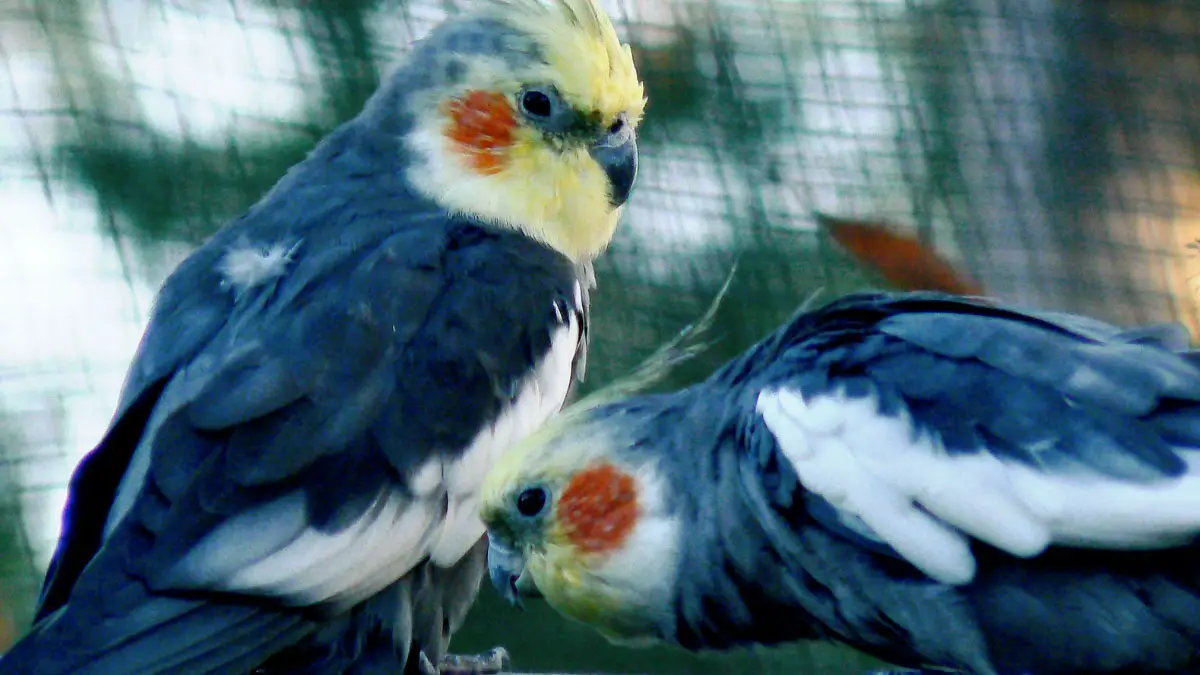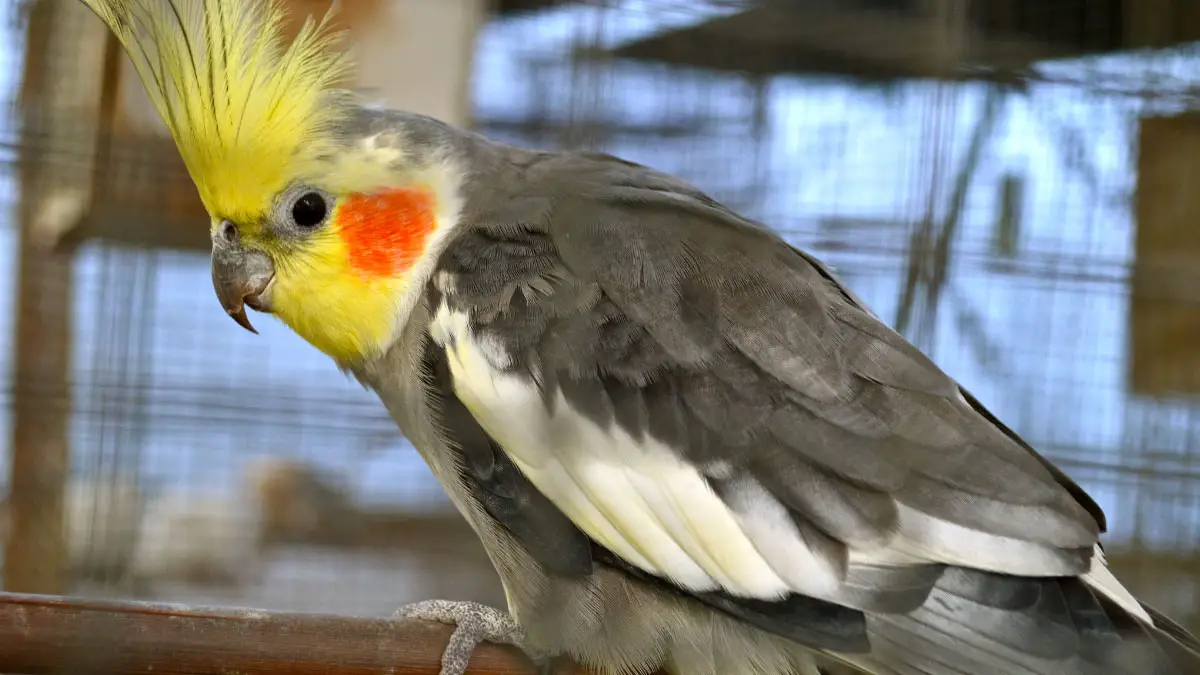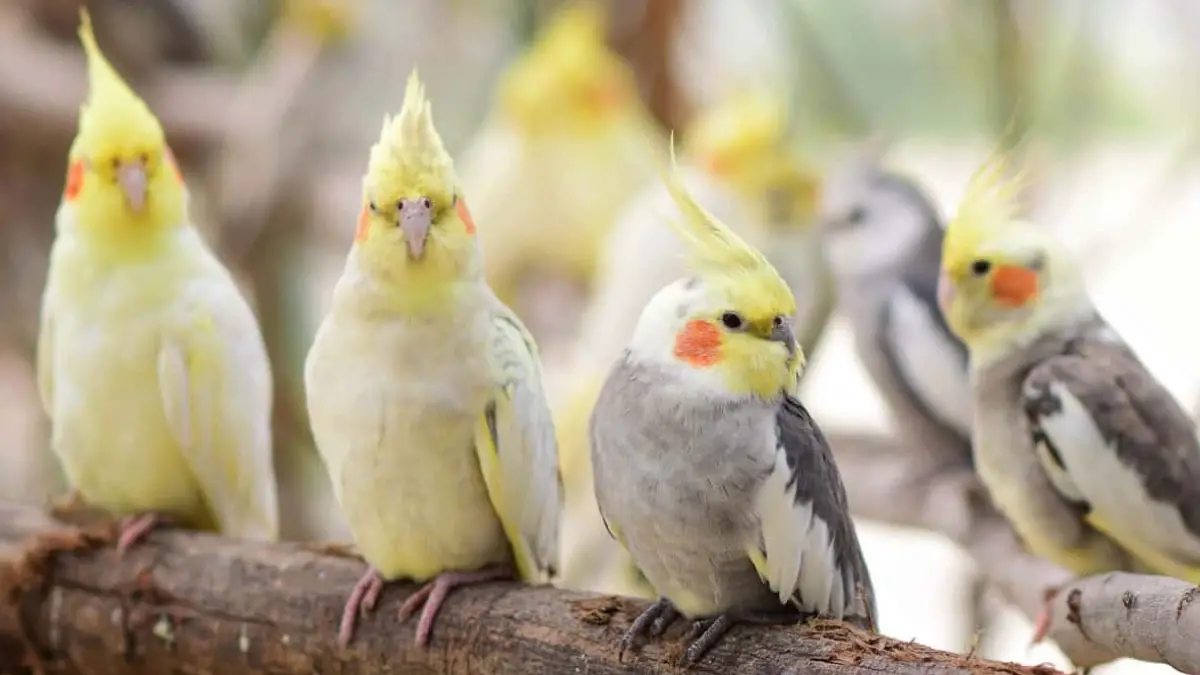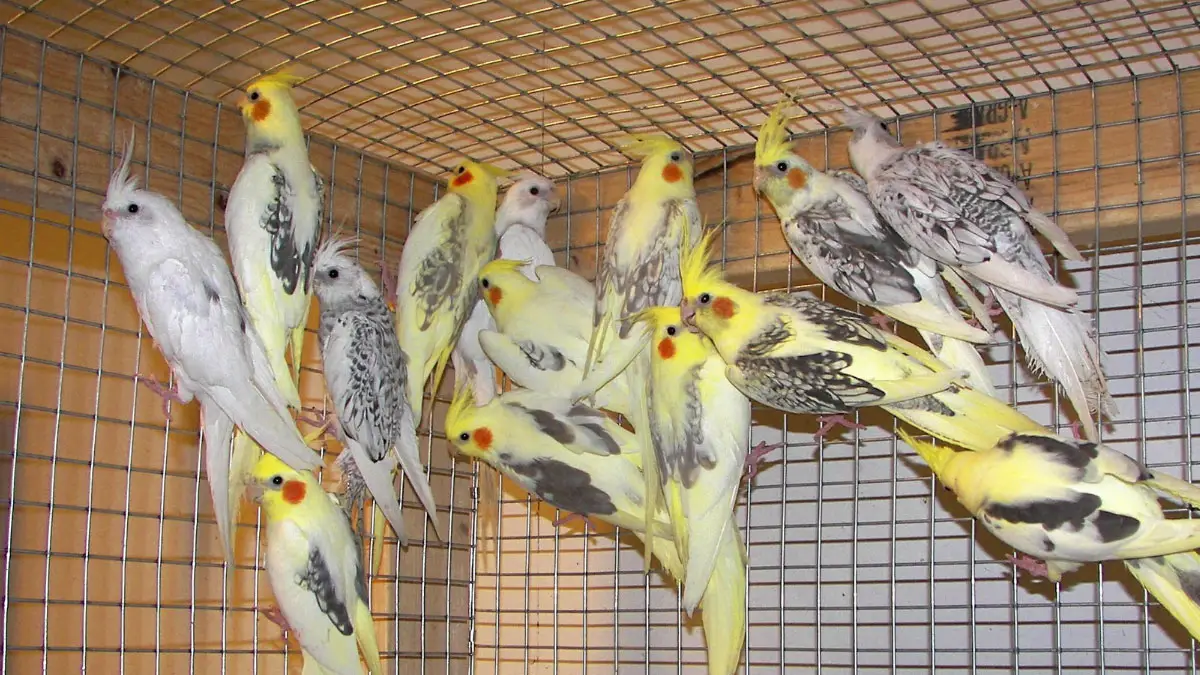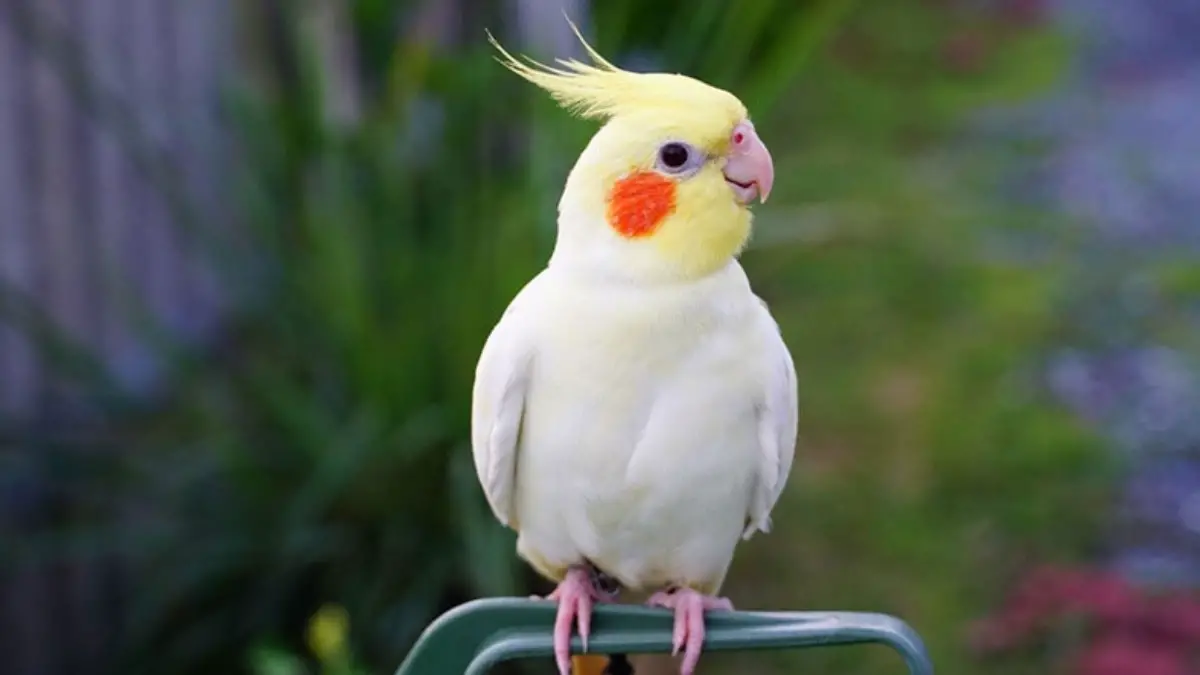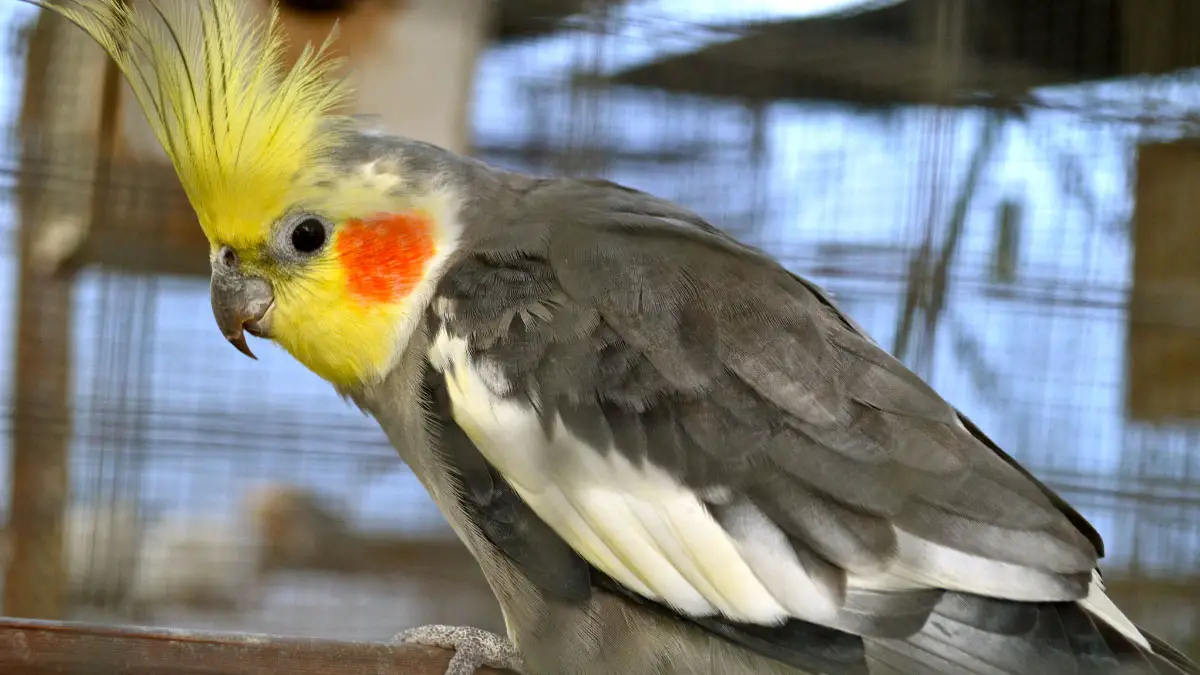Cockatiels’ Feathers are an important parameter of their wellness. The feathers of your pet cockatiel must always look lustrous, bright, and healthy, and they should preen their feathers meticulously. If some exceptions happen, it’s natural that you will be anxious.
Why do cockatiel feathers look bad? How to make it look good again? Bad looking cockatiel feathers may have been caused by molting, parasites, feather diseases, and hormonal imbalance. Their bad habits and nutritional deficiencies could also be responsible. Proper diet, hygiene, and regular visit to the vet for checkups can ensure healthy and beautiful feathers for your cockatiel.
In this article, we are going to provide a detailed discussion about cockatiel feathers’ problems and their cure. Thus, stay tuned if you are concerned about these aspects.
What Causes Cockatiel Feathers to Look Bad? How to Make It Look Good Again?
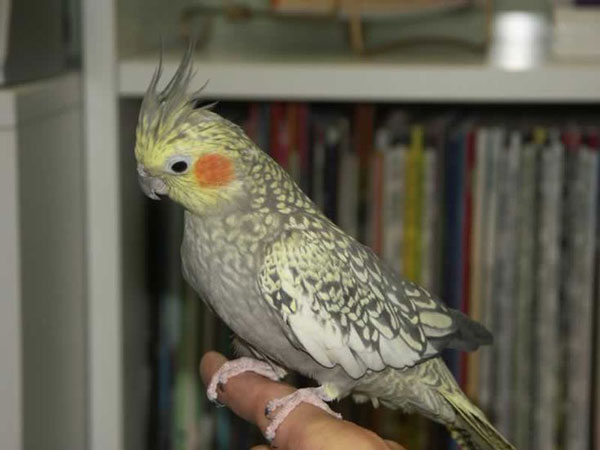
If you want to see everything in one place, here’s a table that sums up the different feather issues in cockatiels, why they happen, and how you can help to make them look good again. Check it out.
| Types of feather problems | Reasons | Solutions |
| Allergies | Food issues Chemicals of cleaners, household products | Isolating the irritant. Visit a vet. |
| Baldness | Self-plucking or plucking by another cockatiel Mineral deficiency Hormonal imbalance Psittacine beak Feather mites | Consulting a vet |
| Bleeding | While growing new feathers. | The broken end of the feather has to be held tightly for ten minutes. Once the bleeding stops, visit a vet. |
| Cysts | Genetics Malnutrition Infection of follicles | It needs surgical intervention to remove cysts |
| Fat tumors | Thyroid gland conditions. Genetics Poor diet Obesity | Improved diet Additional exercise Iodine supplements In severe cases, surgery is needed. |
| Frayed feathers | Mineral deficiency | Providing access for your cockatiel to a mineral block Mineral supplements |
| Plucking feathers | Stress and boredom Mating hormone Liver disease or cancer Bacterial or fungal Infection Bad habits | Giving a bath to your cockatiel. Nutritional supplements Fit a collar |
| Stress bars | Temperature fluctuations Dietary issue Emotional stress | Arrange the cage to minimize any contact with your birds with the things in the case during their panicked moment. |
Cockatiel Feathers Look Bad: Causes Explained
There might be numerous reasons for tattered feathers on a cockatiel, as discussed in the table. But more or less, they fall into the following categories, so take a look at these.
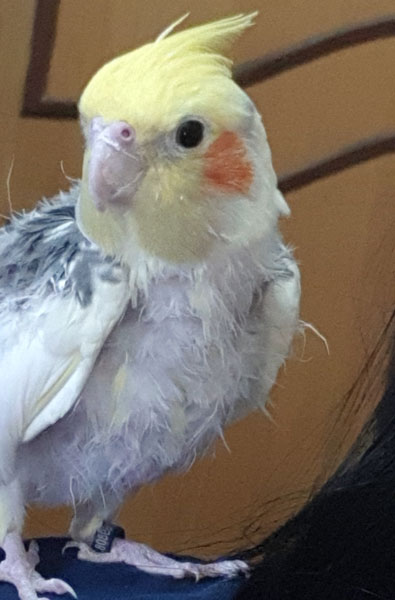
1. Molting
During the period of molt, old and worn out features are shed to pave the way for new ones. The process takes a few weeks to complete, so until it finishes completely, you may find your cockatiel feathers untidy and disordered. But all you have to do is wait a few days until it completes.
However, partial molting or abnormal molting can really make things look ugly. In such cases, not all the feathers of your tiel grow adequately. They could even be left with bad-looking bald patches. Since it indicates an underlying health condition, you should take your bird to the vet immediately.
2. Improper care
Healthy feather growth requires proper care of your cockatiel. You should be aware of how taxing feather growth can be on your bird’s body. Thus, you need to provide them with a proper diet.
Moreover, if you want to keep your cockatiel’s feathers excellent year-round, bathing and grooming them regularly is the basic point. However, you don’t need to brush them since they can do it on their own through a process known as preening.
3. Stopped Preening
Birds are baked with the combination of the beak, foot, and an innate behavior to adjust almost every feather on the body. The process is called preening. If a bird stops preening, it may have messy-looking feathers. Birds only stop preening when they’re suffering from illness or feeling severely uncomfortable. So whenever you notice they’ve stopped preening, take them to the vet.
4. Behavioral reasons
In the wild, parents cockatiel teach their young how to take self-care of their feathers. They enlighten them about how to bathe, how to preen, how to get proper vitamins for feather growth, and other essential aspects of feather care.
But captive pet birds aren’t aware of those mandatory behaviors. So, you need to train them to take proper care of their feathers on their own.
5. Feathers Plucked
Cockatiels sometimes pluck their own feathers, which is an abnormal thing and is probably caused by stress-related issues. If your tiel is bored, alone, scared, uncomfortable, or frustrated about mating, it may be plucking its own feathers and making them look ugly.
However, if another bird is present around them or in their cage, they might indulge in a fight and start pecking, which refers to plucking each other’s feathers. So make sure your cockatiels feathers aren’t plucked by the bird itself or others.
6. Medical reasons
There are multiple medical reasons for your cockatiel having poor feathers. That’s why you need to visit the vet on a routine basis. Below are some common causes why your cockatiel might have poor feathers:
- Allergies
- Cyst or Tumor
- Hormonal imbalance
- Mineral deficiency
- Psittacine Beak and Feather Disease (PBFD)
- Feather mites or ringworm
Indeed, you have to give your bird proper nutrition and keep up with the annual wellness examination of your bird. These routine wellness check-ups will ensure your bird is healthy, happy, and strong enough to grow healthy and beautiful feathers.
If you wish to learn a bit more, check out this:
What Do the Feathers of A Healthy Cockatiel Look Like?
So what does a healthy feather of the cockatiel should like. Firstly, they should be dense, evenly distributed, and contain a natural color. The original color of their body is grey. However, The color differs between male and female cockatiels.
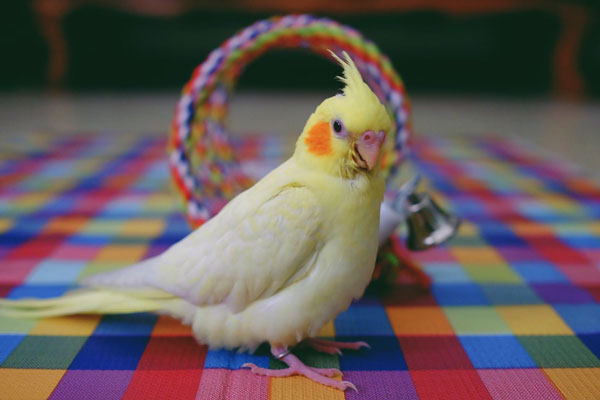
| Female Cockatiels | They have light grey color feathers all over their body. Besides, the feathers on their head and faces are brighter and more colorful. They have some light red feathers on their chin. Additionally, tails, legs, wings, and abdomen include some light yellow color “barred” or “dots”. |
| Male Cockatiel | Feathers of male Cockatiels have a darker color. His face is mostly bright yellow. A bright red color can be seen in their chin area. Also, feathers below the tail and wing area are somewhat different from the female ones. |
How to Take Care of a Cockatiel’s Feathers?
You must have to follow these for taking proper care of their feathers. This will prevent further serious feather problems. Those are
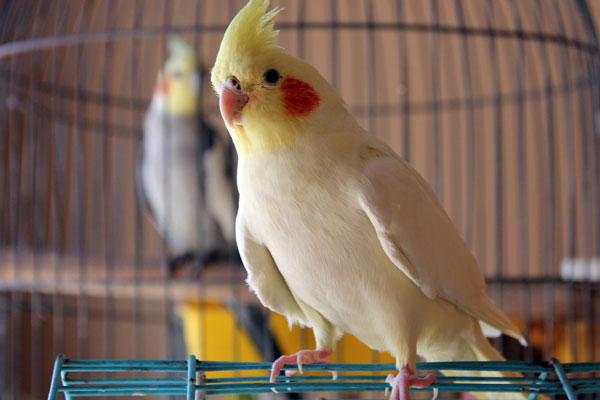
- Scheduled wellness checkups of your birds.
- Teach your bird important skills such as
- How to bathe on their own.
- Reinforcing normal preening
- Improve dietary intake by training them on how to eat vegetables.
- Make sure your cockatiel is having enough sleep every night.
- Encourage foraging activities. This will keep them busy and their mind off excessive preening and plucking.
- Sun Basking your bird for at least 20 minutes a day
Essential Nutrients for Healthy Growth of Cockatiel Feathers
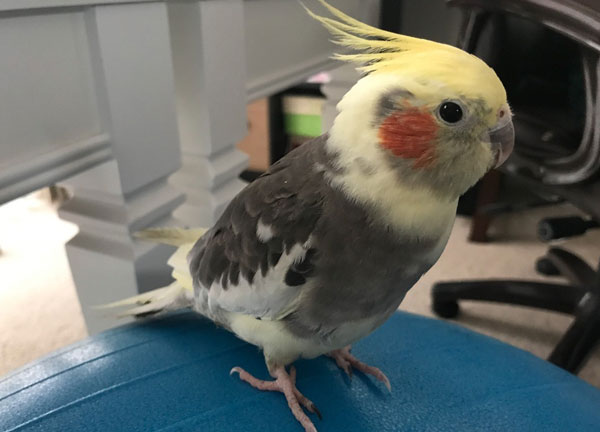
Heth feather growth requires 8 essential nutrients:
Vitamin-A: Helps to produce sebum which keeps their skin moisturized. This allows healthy feather growth.
Vitamin B: Plays an important role in the synthesis of red blood cells and metabolism. This breaks down the carbohydrates and fats which remove the dullness of feathers.
Vitamin C & E supports their feather follicles. This is essential for growing beautiful feathers.
Vitamin D: Vitamin D is very efficient in eliminating baldness.
Zinc: Maintains the health of oil glands surrounding follicles, and keeps the system moisturized and functioning. Also, repairs the broken feathers.
Iron: Helps in boosting blood flow to pin feathers. Thus, these grow faster.
Amino acids: It provides protein to molting cocktails which are very essential for them. Extra protein is necessary for cocktails for growing strong feathers.
FAQs
We’re not done just yet. In this section, we’ll address some of the most common queries people have regarding the matter.
Cockatiel Feathers can fall out for various reasons. The most common reasons are normal or abnormal molting, feather diseases, destructive behavior, and stress.
Moreover, excessive preening by their parents or cage mates can also cause their feathers to fall out. Besides, numerous bacterial and viral infections are also responsible for falling out of feathers.
Yes. Every cockatiel goes through a molting period. This is a natural process of shedding old feathers and growing back new feathers.
Thus, if your cockatiel only loses a feather here and there that’s normal. But, if your bird loses a lot of feathers all the time, then it might be having some health issues.
A cockatiel can lose a few features all around the year. But, massive feathers shedding occurs only during molt. They start their adult molt within 6-12 months of their age.
Depending on the bird and the weather, this phenomenon varies. Generally, they shed feathers once or twice a year.
Conclusion
So, why do cockatiel feathers look bad? How to make it look good again? Cockatiels are beautiful birds, but for various reasons, their feathers may turn messy. Their unhealthy-looking feathers may also indicate serious health issues. Therefore, you must be aware of these issues if you have a cockatiel as a pet.
In this article, we tried to eliminate all of your dilemmas regarding why your cockatiel’s feathers may not be looking good. We hope you can now take proper care of your pet bird and also of yourself!
